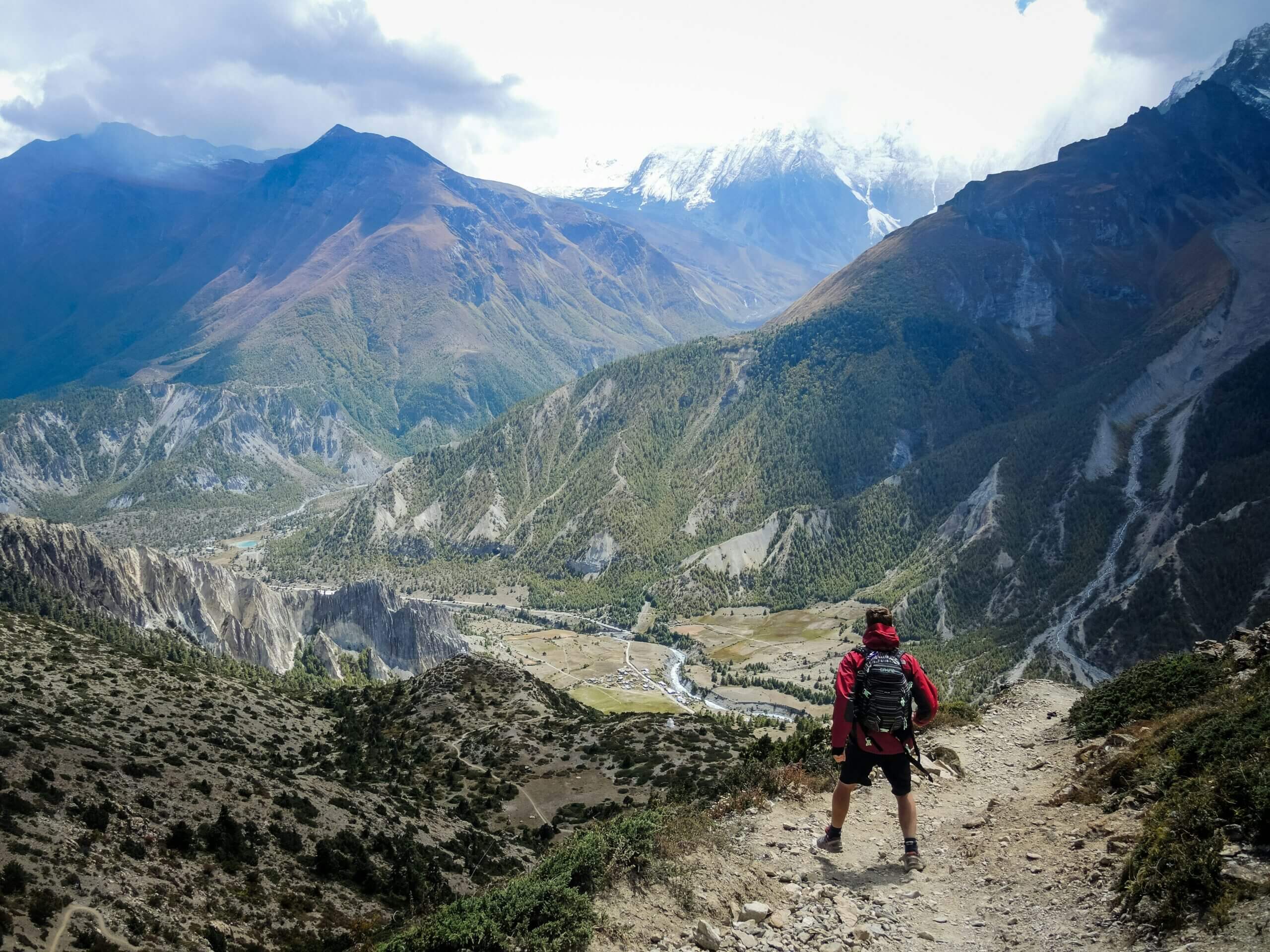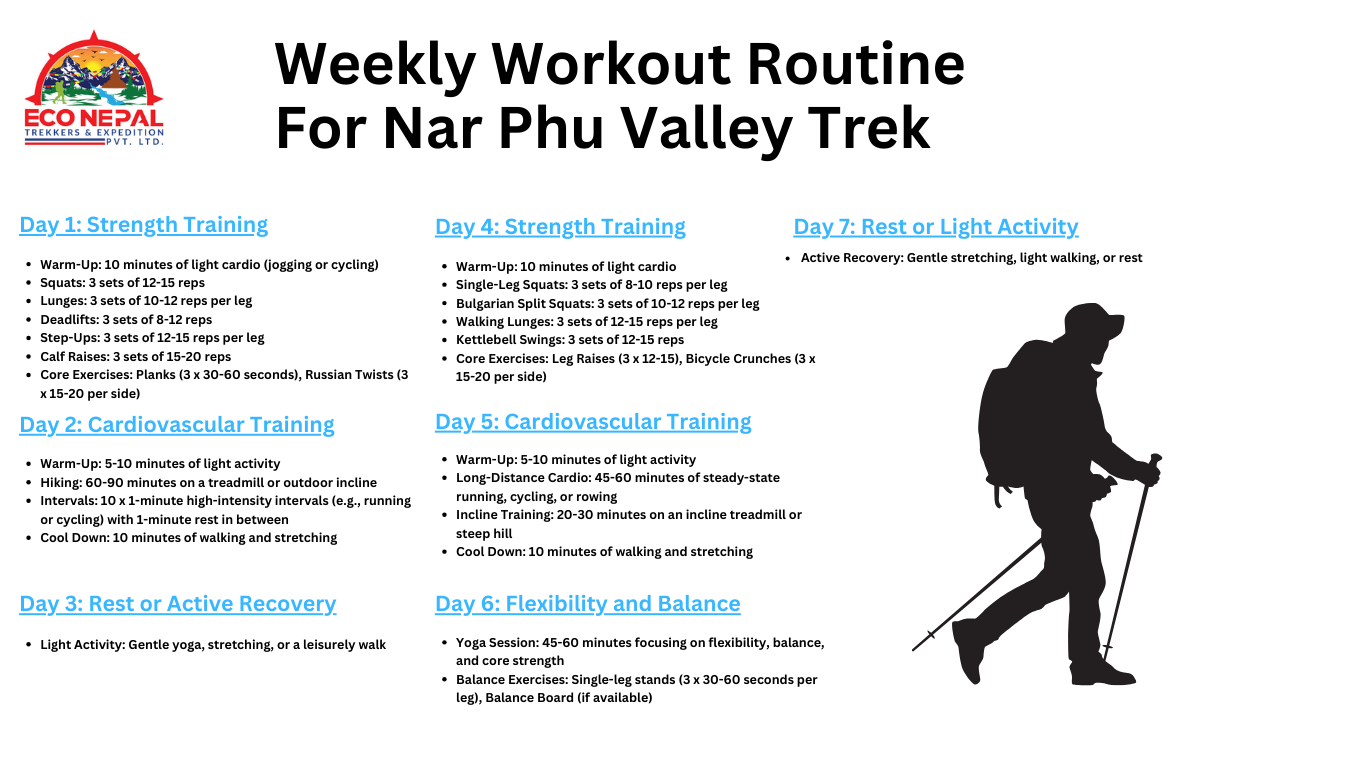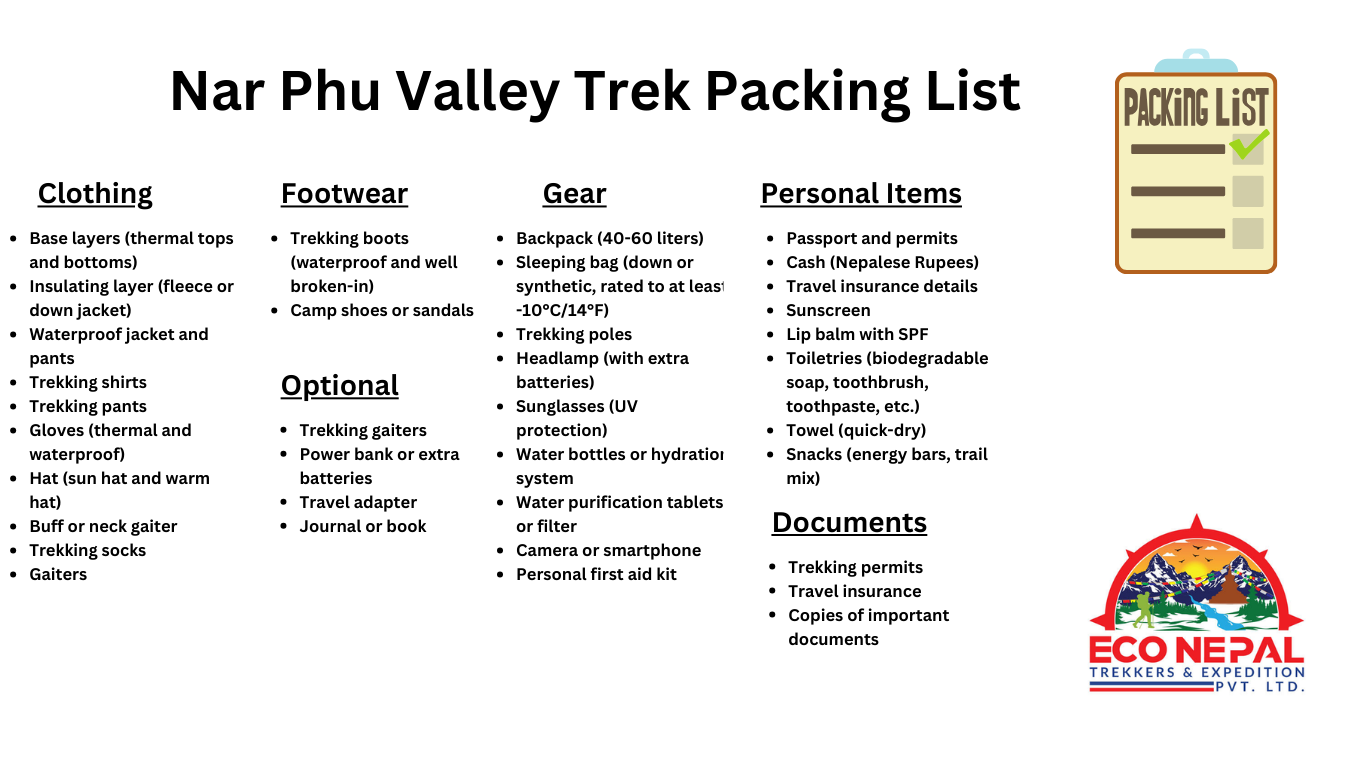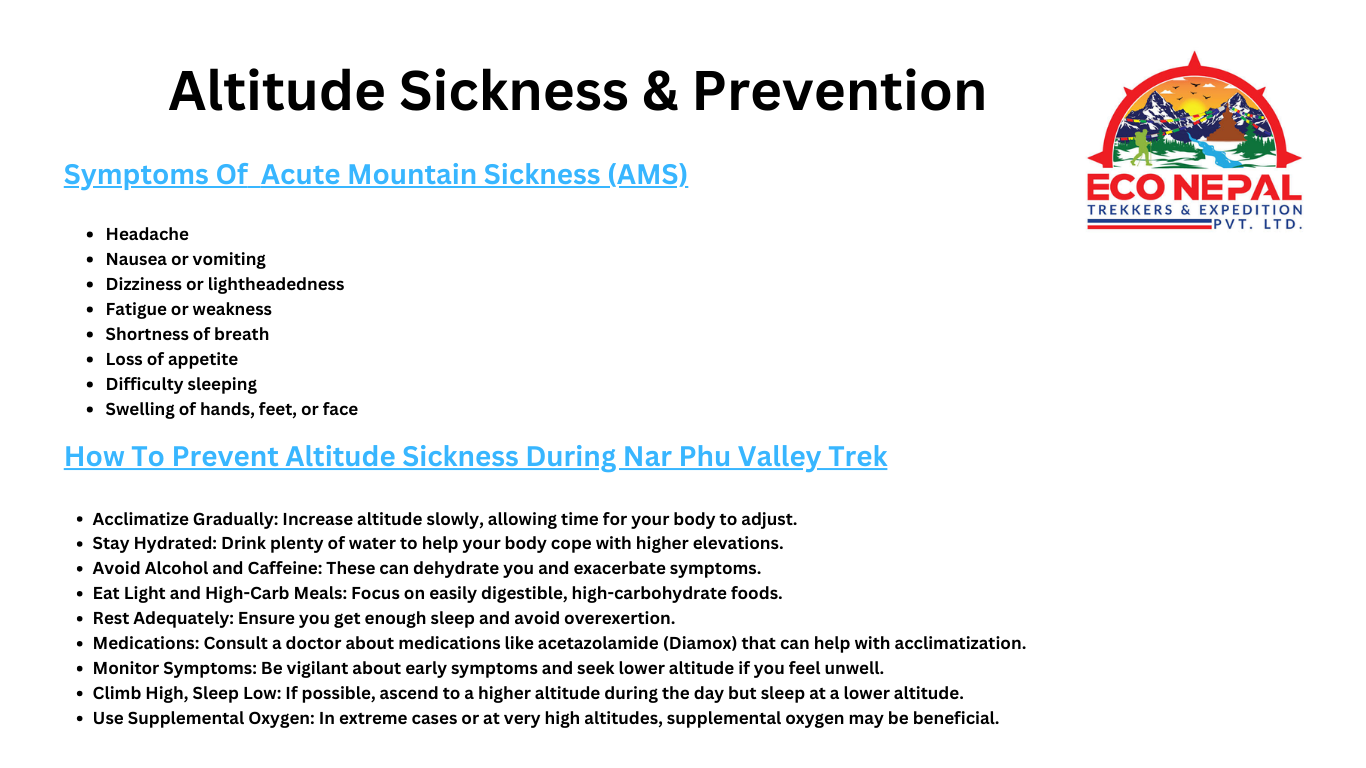Ultimate Guide To Nar Phu Valley Trek Overview
Nar-Phu Valley, located in the remote northern Manang District, is a charming and lonely village in the Annapurna region. This trek provides the most spectacular views of the Annapurna region, and many tourists consider it an alternative to the Annapurna Circuit Trek.
The lovely villages of Nar and Phu inspired the name of Nar Phu Valley. A few days’ climb north of Nar, at 13,642 feet, is Phu, at 12,992 feet. Between them are the settlements of Kyang (of Phu), Meta, and Chako (part of Nar).
Breathtaking views of these extremely high peaks, such as Gangapurna (7455m), Annapurna II (7937m), Himlung Himal (4900m), and Tilicho Peak (7134m) can be seen from the Nar Phu valley.
There aren’t many local poplars in the upper altitudes because of the severe winter temperatures, which have caused many of them to migrate to the lower region.
Due to the trail being located near the Tibetan border, trekkers must get a special limited permit before beginning their journey. Additionally, since hikers will pass through the Annapurna Conservation Area, they also need to obtain the ACAP permit.
Nar Phu Valley is a high, dry valley with a few hundred people living in two small villages. It is bordered by ancient ruins, sacred sites, yak herds, wild sheep, and some of Nepal’s highest snow peaks.

Required Permits For Nar Phu Valley Trek
To begin your spectacular experience in the Nar Phu Valley, make sure you have the restricted area and ACAP permit. According to government regulations, hikers must collaborate with a trekking agency and a trekking guide when going on a trek.
- A restricted Area Permit (RAP) costs $100 during the trekking season (October to April) and $75 during the less busy rainy season
- Annapurna Conservation Area Permit (ACAP) costs 2,000 rupees.
Further reading: Nar Phu Valley Trek Permit
How to Reach Besisahar/Chame For Nar Phu Valley Trek
Traditionally, the journey to Naphu Valley Trek started at Besisahar; but, with the construction of a new motor road further north, the trip has become shorter. Now you can ride up to Chame and then start your trek.
The famous way to reach Besisahar/Chame which is a popular gateway for trekking to Nar Phu Valley trek and other trek destinations like Tilicho Lake, Annapurna Base Camp, and Annapurna Circuit is by taking road transportation.
To get to Besisahar, trekkers can take the local bus or hire a private jeep or Hiace. Approximately 176.1 kilometers of road travel, along the Prithvi Highway, separates Kathmandu and Besisahar, and it takes 6 hours and 20 minutes to get there. By private vehicle, it will take an extra four hours to go to Chame from Besisahar. Alternatively, you can fly from Kathmandu to Pokhara and take a private vehicle to Besisahar, which would take about three hours.
There are enough hotels/lodges or tea houses to accommodate before starting your Nar Phu Valley Trek. We strongly advise you to book the flight ticket in advance, especially during peak season.
Note: If you want to spend more time exploring Nar and Phu, make sure to add an extra 2 days to your trekking itinerary. This stretch guarantees you fully appreciate the valley’s spectacular scenery and is necessary for acclimatization. As you get ready, make sure you are in good physical shape for the hike, have all the necessary permits, and are well-stocked with supplies.
Accommodation In Nar Phu Valley Trek
Along the Nar Phu Valley trek route, tea houses and small hotels provide lodging for most hikers. In the past, these businesses have been essential to trekking in Nepal, and this is still the case today. The tea houses provide straightforward but cozy accommodations with basic amenities.
A private room with an attached bathroom may be found at a lower height, whereas a room with twin beds and a communal bathroom can be found at a higher altitude. The bathrooms around here are often squat, so you’ll need to bring your supplies of soap, toilet paper, shampoo, and sanitizer.
Almost all the tea houses provide you with warm blankets but if you want to be extra warm, especially during the winter, it’s a good idea to bring a sleeping bag. Beds here are often simple, with a tiny table or shelf for personal belongings.
Worth reading: Popular Tea House Trek in Nepal
Food In Nar Phu Valley Trek
In the Nar Phu Valley, traditional Nepalese, Tibetan, and some international cuisines are served in the tea houses. Trekkers can eat three times every day: breakfast, lunch, and dinner during the trek. The food here is fresh and healthy because they generally use local produce and ingredients.
Let’s see the common food that you can expect in the Nar Phu Valley tea house
Breakfast: Pancakes, cornflakes, jam-topped French toast, oatmeal, Tibetan bread, or chapati, and local tsampa porridge Hashed Cheese, Butter, Honey, and Brown Eggs Egg types (omelets), Muesli bread, fruits, and vegetables, as well as hot beverages such as teas, coffees, and hot chocolates
Lunch: Lunch options include dal, bhat & Tarkari, sherpa stew, spaghetti, Tibetan bread, momo (dumplings), macaroni dishes, salad, and pizza with tomato, mushroom, and mixed vegetables. Other options include various soups, Tenduk, vegetable curry, potatoes, noodles, Thukpa, pasta, steaks, sandwiches, and desserts like rice pudding and apple pie.
Dinner: Dinner will include lentils (dal), rice (Bhat) and curry (Tarkari), Tibetan bread, a variety of soup items, sherpa stew, sandwiches, momo (dumplings), macaroni dishes, Thukpa, pasta, vegetable curry, potato items, papad, prawn, Korean ramen, salads, veggies, steaks, and desserts (rice pudding, apple pie), among other things.
Beverage: Beverage options include beer, wine, soft drinks, cold drinks, tea, coffee, and alcohol produced locally.
Nar Phu Valley Trek Difficulty
With a strenuous difficulty rating, the Nar Phu Valley walk typically takes two to three weeks to complete. Trekkers must walk for five to seven hours a day on average, with some difficult ascents and descents along the way.
Trekkers need to have moderate to high levels of physical fitness for this trek. Also while passing challenging passes like Thorong La Pass 5,400 meters the chance of altitude sickness remains high.
Another main factor that adds to the difficulty during the Nar Phu Valley trek is remoteness and unstable weather conditions in the high altitude. So it is advisable to trek only during the best time and pack enough gear and clothes items before embarking on this beautiful trek.
How To Prepare For The Nar Phu Valley Trek
 While you are planning to undertake this Nar Phu Valley Trek it is essential to prepare in advance to have a comfortable and adventurous journey. Make sure to maintain a good level of physical fitness by spending some hours every day in cardio exercise, strength training, endurance training, and flexibility. You can also participate in yoga and meditation classes to enhance your mental fitness, which is equally important for this trek.
While you are planning to undertake this Nar Phu Valley Trek it is essential to prepare in advance to have a comfortable and adventurous journey. Make sure to maintain a good level of physical fitness by spending some hours every day in cardio exercise, strength training, endurance training, and flexibility. You can also participate in yoga and meditation classes to enhance your mental fitness, which is equally important for this trek.
Importance Of Travel Insurance For The Nar Phu Valley Trek
Nar Phu Valley is one of the remote trekking destinations in the Annapurna Region. Due to remoteness, animals such as yak and mules carry the logistics. There are no well-established hospitals, good road connections and modern facilities here. So while traveling in such places to reduce the risk and to get the immediate medical and education facilities, trekkers are recommended to have travel insurance.
Note: The following must be covered by your trip insurance: altitude risk, flight cancellation, medical costs, loss of luggage and theft, accident, and—most importantly—emergency helicopter evacuation. Recall that you cannot get travel insurance in Nepal, so be sure you get it from your home country.
Best Time For Nar Phu Valley Trek
For most of the trekking destinations in Nepal including the Nar Phu Valley trek, it’s better to trek during the month of the spring and the autumn season. During this month the weather conditions remain most of the time and moderate temperatures during the daytime and nighttime many trekkers trek in this season. Therefore spring and the autumn season is considered the best time to trek here in Nepal for the Nar Phu Valley Trek.
Trekking in the winter and the monsoon is also possible but it is more daring and challenging. In winter the temperature at the higher altitude falls drastically and the possibility of heavy snowfall and freezing temperatures creates difficulties. Similarly, in the monsoon time, the heavy rainfall causes floods and landslides and it can create trouble to reach the destination. So, we suggest you avoid trekking here in winter and monsoon periods.
What To Pack For The Nar Phu Valley Trek?
 Trekkers need to pack all the essential clothing items, gear and equipment before joining the Nar Phu Valley Trek. Make sure to pack only the essentials and avoid overpacking. Pack the clothing items according to the season you choose to trek. Additionally, bring essentials like rainproof and all-season gear to prepare for unexpectedly unstable weather.
Trekkers need to pack all the essential clothing items, gear and equipment before joining the Nar Phu Valley Trek. Make sure to pack only the essentials and avoid overpacking. Pack the clothing items according to the season you choose to trek. Additionally, bring essentials like rainproof and all-season gear to prepare for unexpectedly unstable weather.
For packing details check here: Nepal Trekking Packing List
Learn About Altitude Sickness And Its Preventive Measures
 Acute mountain sickness which is commonly known as altitude sickness is common while trekking to the high altitude of Nar Phu Valley Trek. Due to the low level of oxygen, it might create problems in breathing and you can experience several common symptoms of altitude sickness.
Acute mountain sickness which is commonly known as altitude sickness is common while trekking to the high altitude of Nar Phu Valley Trek. Due to the low level of oxygen, it might create problems in breathing and you can experience several common symptoms of altitude sickness.
The initial symptoms are easily curable but if it turns into HAPE and HACE then it can be fatal. So trekkers need to carefully observe if there are any symptoms of altitude sickness during the trek. If they experience them, they should immediately inform their trekking guide and return to a lower altitude.
Trek With Reputed Trekking Agency
Reputed trekking agencies have years of experience in the trekking field. They know well how to maintain the safety of trekkers during the trekking and how to handle the emergency. The reputed trekking agency also follows the “Leave No Trace” principles so that there will be minimal impact on the natural beauty of the Nar Phu Region.
Hire Local Guide and Porter
Hikers who wish to trek in the Nar Phu Valley must employ a trekking guide. Make sure your trekking guide is properly trained and registered with the authorities when you hire them. Local guides will provide you with insightful information about this area and are familiar with all of the hiking paths in the Nar Phu Valley. They also know when to trek in the event of continued weather instability.
Furthermore, if you hire a porter, they will carry all of your bulky backpacks. Through the creation of jobs, hiring the guide and porter also contributes to the region’s economic growth.
Read more: Guide and porter for Nar Phu valley trek
How Much It Cost To Do Nar Phu Valley Trek
| Cost Category | Estimated Cost (USD) | Details |
| Trekking Permit | $50 – $100 | ACAP permit: $30, and Nar Phu permit: $50 (prices vary) |
| Guide | $25 – $35 per day | Can vary based on experience and group size |
| Porter (if hired) | $15 – $25 per day | Around 12 kg per trekkers |
| Accommodation | $10 – $25 per night | Teahouses and lodges; prices vary based on comfort levels |
| Food | $15 – $30 per day | Includes breakfast, lunch, and dinner |
| Transport (to start) | $10 – $50 | Local bus to Koto or Jomsom; varies by mode of transport |
| Insurance | $50 – $150 | Travel insurance for trekking; is highly recommended |
| Miscellaneous | $50 – $100 | Souvenirs, snacks, tips, and other personal expenses |
Trekkers can find the Nar Phu Valley Trek Package Cost for around 1200$-2500$ per person.
How to Book the Nar Phu Valley Trek With Eco Nepal Trekkers
In this modern era booking is not a big problem. With a single click on a website, you can book the Nar Phu Valley Trek. Let’s see the step-by-step process for booking the package from Eco Nepal Trekkers.
Step 1: First read details about the package, terms and conditions, and price on our website.
Step 2: Then fill up the form on the inquiry page.
Step 3: After we receive your information, we will mail or contact you to discuss details about your planning date, group, and so on.
Step 4: You need to send us 20% of the total Nar Phu Valley Trek cost to confirm the booking. After we receive your advance payment, we will send you a booking confirmation email with information on how to plan and prepare for the Nar Phu Valley trek.
Note: Eco Nepal Trekkers Provides a special discount to the group above 10 people.

Some Frequently Asked Questions About Nar Phu Valley Trek
Do we need a visa for the Nar Phu Valley Trek?
Yes, you can easily obtain the visa once you arrive at the Kathmandu International Airport. The cost of the visa depends upon how long you stay here in Nepal for the Nar Phu Valley trek. For a 15-day tourist visa, it will cost you 30$. For a 30-day tourist visa, it will cost you 50$, and for a 90-day tourist visa, it will cost you 125$.
What are the documents required for the Nar Phu Valley Trek?
To undertake the Nar Phu Valley trek make sure to have proof of travel insurance and a valid passport with a recent pp-size photograph.
Where is Nar Phu Valley Located?
Nar Phu Valley is located in the Annapurna region of Nepal, nestled between the Annapurna and Manaslu mountain ranges. Nar Phu Valley is approximately 200 kilometers (124 miles) far from Kathmandu.
Can we trek solo for Nar Phu Valley Trek?
No, trekking solo in restricted areas like Nar Phu Valley is not possible. You need to go through the registered trekking agencies from Nepal and obtain a special permit with a licensed trekking guide with you. Also excluding guides there should be a minimum of two people in a group.
How long does it take to complete the Nar Phu Valley Trek?
The Nar Phu Valley trek can be completed in 10-14 days. However, the exact date depends upon the trekking itinerary you choose and how much you want to spend in the mountain region of Nar Phu Valley.
Can we customize the Nar Phu Valley Trek?
Yes, if you like to have your own customized itinerary for the Nar Phu Valley Trek it is also possible. For this, you need to talk with our expert team of Eco Nepal Trekkers. So that we can plan well.
How hard is the Nar Phu Valley Trek?
The Nar Phu Valley trek is not so hard if you have a good level of physical fitness. The challenging factors of this trek that make it hard is its remoteness, due to which trekkers need to stay in limited facilities inside the cozy tea houses during the trek.
How much does a permit cost for the Nar Phu Valley Trek?
For trips from September to November, the rate is USD 100 per person for one week. If you are trekking between December to August, the cost is USD 75 per person for one week. For stays longer than a week, it’s an additional USD 15 per day per person. Additionally, you will need an ACAP (Annapurna Conservation Area Permit) which will cost you NPR 3,000 per person.
What is Nar Phu Valley Trek Famous for?
Nar Phu Valley Trek is renowned for its untouched wilderness and breathtaking landscapes. It offers stunning views of Manaslu and Annapurna, magical forests, and lush hills. The area is also known for its traditional villages, Tibetan-influenced culture, Buddhist monasteries, famous Muktinath Temple, and much more.

